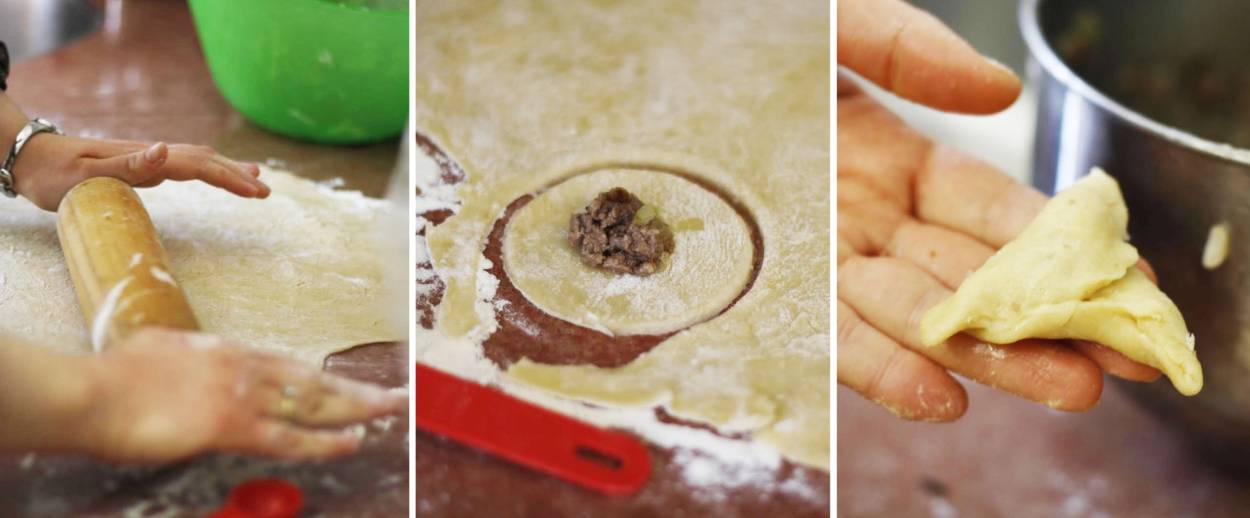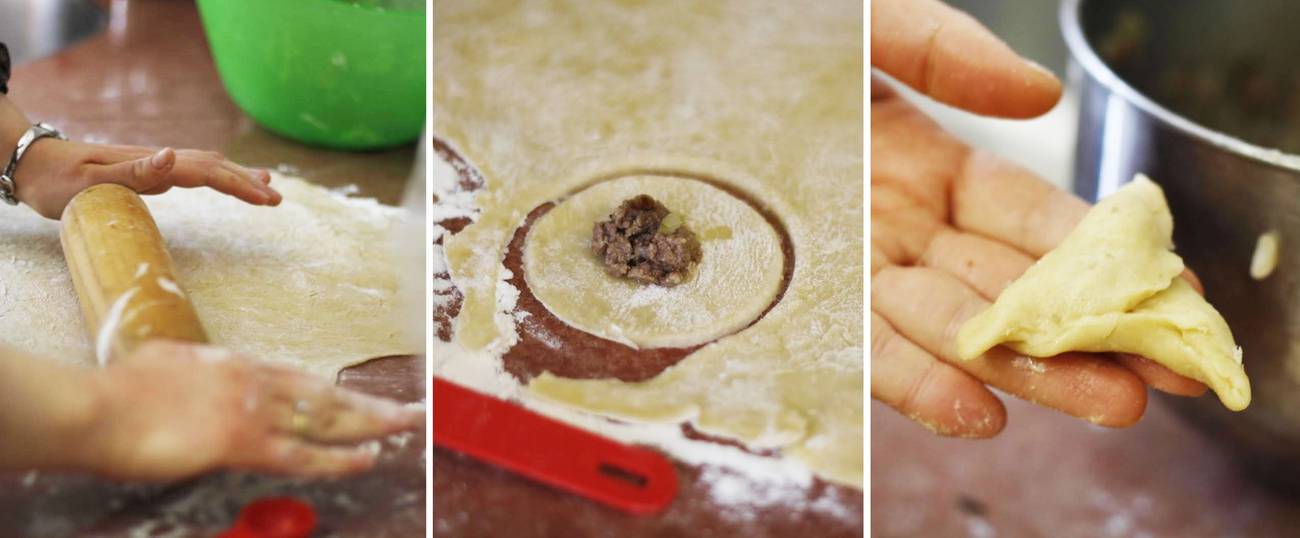Move Over, Matzo Balls. Here Come Kreplach, the Metaphysical Dumplings.
On Hoshana Rabbah, as the High Holidays’ period of judgment comes to a conclusion, give your chicken soup a taste of something meaningful




Hoshana Rabbah—the holiday that falls on the seventh day of Sukkot—includes one of the strangest of Jewish rituals: beating willow branches against the floor.
This beating occurs right after the Hoshana prayers, long liturgical poems whose main theme is visceral request for God’s mercy. The word hoshana literally means “save us.” After all of the Hoshanas have been said (on Hoshana Rabbah there are seven; during the rest of Sukkot, only one) everyone takes out their bundles of five willow branches (not by dismembering the lulav but from another arava set purchased specifically for this day), and then comes the high point of the holiday: Everyone bends down and whacks their bundles against the floor five times.
This is nothing new; Jews have been doing this since the First Temple was standing, in preparation for the following day’s holiday of Shemini Atzeret, when the prayer for rain is recited. Willows are related to rain and water; that is how the plant is able to thrive. But what is the beating all about? No one seems to have a good answer. Even Eliyahu Kitov, the leading expert on the Jewish holidays and their lore, seems to throw up his hands at this one: “The custom of beating of the arava on the ground contains profound esoteric significance and only the Great of Israel merit the knowledge of those secrets,” he writes in his classic work The Book of Our Heritage.
Some scholars interpret the beating as an expression of remorse. That makes sense, as Hoshana Rabbah signals the end of the cosmic judgment process; it’s when the judgment rendered on Yom Kippur goes into effect. The mystics describe “notes” containing the judgment dispatched by God to the angels. That’s why the day’s traditional blessing is a “may you have a gitte kvitel,” or a favorable note.
Today, it’s mainly among Hasidim—dressed in holiday clothing, the men in fur hats and silken caftans—that Hoshana Rabbah gets its full honor.
But one of the more widely observed traditions on Hoshana Rabbah is eating a festive meal in the sukkah. (In Israel, Hoshana Rabbah is the last day to eat in the sukkah, although in the Diaspora some Jews eat in the sukkah on Shemini Atzeret, too.) The holiday’s dish du jour is chicken soup with kreplach.
While a pastry wrapper is a clever way to stretch a small piece of meat to feed many mouths, kreplach aren’t just the Jewish answer to ravioli or wontons. Like Hoshana Rabbah itself, kreplach are metaphysical. According to the Hasidic masters, the little dumplings are edible soft sculptures illustrating God’s benevolent mercy, symbolized by the dough, covering over strict justice, symbolized by the meat.
Kreplach are strictly an Ashkenazi—mainly Hasidic—specialty, appearing on the menu three times during the year: the day before Yom Kippur, Hoshana Rabbah, and Purim. On all three of these days, the theme of mercy covering justice comes into play. (Yom Kippur and Hoshana Rabbah are days of Divine judgment, and in metaphysical terms the Purim story was a victory of mercy over justice.)
Though some people fashion triangular kreplach—seeing, in the three sides, the three patriarchs, three sections of the Jewish people (Kohanim, Levites, and Israelites), and three pilgrimage holidays—you can shape them any way you like. Unlike eating matzo and bitter herbs at Passover, eating kreplach is strictly a minhag, meaning that it’s optional. But make these delicious dumplings once (recipe here), and you’ll opt in.
Carol Ungar’s writing has appeared in Next Avenue, Forbes, NPR, the Jerusalem Post Magazine, and Fox News. She also leads memoir writing workshops on Zoom.